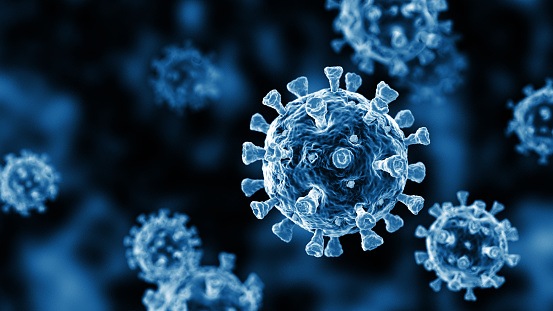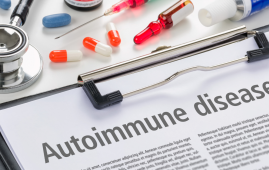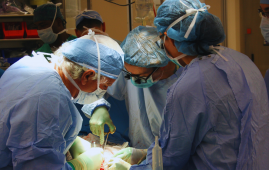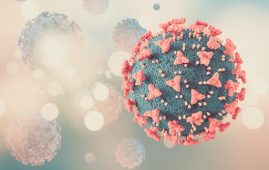

In 1763, Bayes theorem (“An Essay Towards Solving a Problem in the Doctrine of Chances”), one of the most fundamental principles in probability theory, was published in Philosophical Transactions of the Royal Society. In a twist of fate, Thomas Bayes had died 2 years prior to the publication of his lasting legacy, which still resonates throughout modern clinical medicine. Bayes theorem is based on conditional probability or the probability of an event occurring based on other conditions associated with the event in question. Today, bayesian philosophy and consideration of pretest probability remain embedded in the determination of best practices for clinical screening and risk stratification.
In the clinical care of competitive athletes, the emergence of coronavirus disease 2019 (COVID-19) and the marked tropism of severe COVID-19 infection on the cardiovascular (CV) system have raised concerns regarding the potentially deleterious effects of COVID-19 infection on the heart of the healthy athlete. Moreover, recent single-center observational data from the collegiate athletic setting suggest subclinical myocardial injury and alleged myocarditis, as determined by cardiac magnetic resonance (CMR) imaging, may occur after mild and even asymptomatic cases of COVID-19 infection in young athletes. In these prior analyses, the return-to-play screening algorithm included mandated CMR imaging in addition to 12-lead electrocardiography, transthoracic echocardiography, and testing for cardiac troponin levels.
In this issue of JAMA Cardiology, Starekova and colleagues report their institutional return-to-play experience using comprehensive CV testing, including CMR imaging, for all collegiate student-athletes recovered from COVID-19 infection. In this retrospective case series that included the largest number of competitive athletes to date, to my knowledge (N = 145; 108 male patients [74.5%]), several key observations are noteworthy. First, 77% of the cohort reported mild or moderate symptoms, 17% were asymptomatic, and no severe illnesses occurred. Second, the authors report only 2 athletes (1.4%) who were found to have CMR evidence of acute inflammation based on the Lake Louise criteria (CMR imaging has performed a mean [SD] of 21 [24] days after the onset of symptoms). In the athlete with the most marked abnormal CMR imaging, in combination with a small rise in troponin-I level, pericardial enhancement with an associated small pericardial effusion was also observed. This was the only case of presumed myopericarditis, which contrasts with a similar case series of 40 collegiate student-athletes that demonstrated 40% (n = 19) with pericardial enhancement. For both athletes with evidence of myocardial inflammation in this report, systemic inflammatory biomarker levels were normal. Third, although no athlete reported severe symptoms, 28% reported moderate symptoms in which CV risk stratification is currently recommended, and subsequent electrocardiography, transthoracic echocardiography, and troponin-I levels were generally normal. Finally, there was a high burden of nonspecific abnormal CMR findings (n = 40 [27.5%]), particularly isolated late gadolinium enhancement localized to the interventricular septum at right ventricular septal insertion points (n = 38 [26%]). While more commonly described among masters-level endurance athletes, the clinical significance and prevalence of this finding in youthful athletes is uncertain and should not be assumed to be a normal consequence of intense athletic training in young competitive athletes.
Based on these results and because of the poor diagnostic yield of acute myocardial inflammation, coupled with the consideration of costs, level of expertise required for interpretation of advanced CMR imaging parametric mapping techniques, and stresses placed on health care resources, the utility of universal CMR screening prior to return to play after COVID-19 infection appears low. However, we are still left with clinical uncertainty associated with the abnormal CMR findings observed in these preliminary data, particularly in the context of mild COVID-19 symptom severity. With the exquisite sensitivity afforded by CMR imaging, what is the likelihood of clinically significant pathology when the clinical pretest probability of myocarditis is low?
Because of the urgency to assist sports cardiology practitioners struggling with this dilemma and other COVID-19 uncertainties, a writing group selected by the American College of Cardiology’s Sports and Exercise Cardiology Council recently revised consensus recommendations for return to play after COVID-19 infection. Within this document, the group (which included me) emphasized myocarditis as a clinical diagnosis and stressed the importance of pretest probability in consideration of CMR imaging, which is also underscored in both the Lake Louise criteria and most recent sports eligibility documents.
Unfortunately, the current understanding of the prevalence of clinically significant cardiac pathology in milder cases of COVID-19 remains limited. However, there may be clues taken from prior studies of other respiratory viral illnesses. For example, in a study of 200 infected patients with H1N1 influenza (mean [SD] age, 32 [5] years), 32 were referred for CMR imaging based on clinical concerns for possible CV involvement, which included severe chest pain, chest discomfort with dyspnea, electrocardiography abnormalities, and elevated troponin levels with symptoms. Indeed, in 10 of these individuals (31%), acute myocarditis was confirmed. While we cannot generalize these preliminary data to athletes recovered from COVID-19 infection, the lack of appropriate control participants is a critical limitation of current CMR imaging-based COVID-19 observational data.
Equipoise in the care of the athletic heart focused on the avoidance of unnecessary CV testing, is a daily challenge for the sports cardiologist. With this in mind, the report from Starekova and colleagues is a welcome addition to the literature. However, more rigorous assessments of cardiac phenotypes to define COVID-19 disease pathogenesis are still required. Furthermore, clinicians anxiously anticipate data regarding the prevalence of cardiac pathology from ongoing large COVID-19 registries inclusive of collegiate and professional athletes. Importantly, the collegiate registry data will be multicenter and represented by numerous conferences within the National Collegiate Athletic Association. Similarly, data from professional athletes will come from multiple professional leagues in the US. At present, the clinical assessment of pretest probability of myocarditis, coupled with the practice of more conservative return-to-play recommendations, should guide practitioners in the consideration of advanced cardiac imaging in the evaluation of athletes after COVID-19 infection.
“Under Bayes’ theorem, no theory is perfect. Rather it is a work in progress, always subject to further refinement and testing.”(p534) These words from Nate Silver encapsulate the current approach to the evaluation of athletes recovered from COVID-19. Buoyed by the certainty of forthcoming vaccines, we must remain invested in team science to fully understand the effects of COVID-19 infection on the heart, to improve CV health outcomes in athletes throughout this pandemic.
more recommended stories
 Safer Allogeneic Stem Cell Transplants with Treg Therapy
Safer Allogeneic Stem Cell Transplants with Treg TherapyA new preclinical study from the.
 Autoimmune Disorders: ADA2 as a Therapeutic Target
Autoimmune Disorders: ADA2 as a Therapeutic TargetAdenosine deaminase 2 (ADA2) has emerged.
 Kaempferol: A Breakthrough in Allergy Management
Kaempferol: A Breakthrough in Allergy ManagementKaempferol, a dietary flavonoid found in.
 Early Milk Cereal Drinks May Spur Infant Weight Gain
Early Milk Cereal Drinks May Spur Infant Weight GainNew research published in Acta Paediatrica.
 TaVNS: A Breakthrough for Chronic Insomnia Treatment
TaVNS: A Breakthrough for Chronic Insomnia TreatmentA recent study conducted by the.
 First-of-Its-Kind Gene-Edited Pig Kidney: Towana’s New Life
First-of-Its-Kind Gene-Edited Pig Kidney: Towana’s New LifeSurgeons at NYU Langone Health have.
 Just-in-Time Training Improves Success & Patient Safety
Just-in-Time Training Improves Success & Patient SafetyA study published in The BMJ.
 ChatGPT Excels in Medical Summaries, Lacks Field-Specific Relevance
ChatGPT Excels in Medical Summaries, Lacks Field-Specific RelevanceIn a recent study published in.
 Study finds automated decision minimizes high-risk medicine combinations in ICU patients
Study finds automated decision minimizes high-risk medicine combinations in ICU patientsA multicenter study coordinated by Amsterdam.
 Study Discovers Connection Between Omicron Infection and Brain Structure Changes in Men
Study Discovers Connection Between Omicron Infection and Brain Structure Changes in MenA recent study in the JAMA.

Leave a Comment